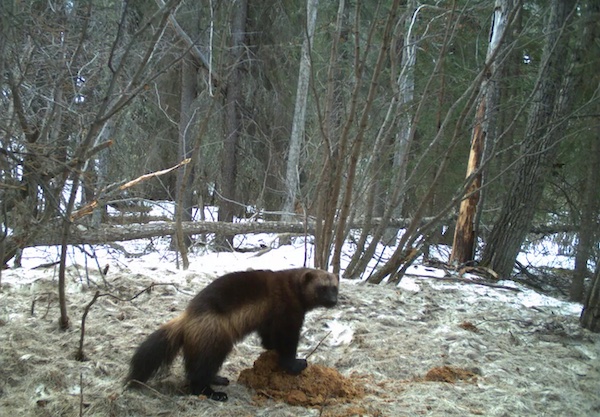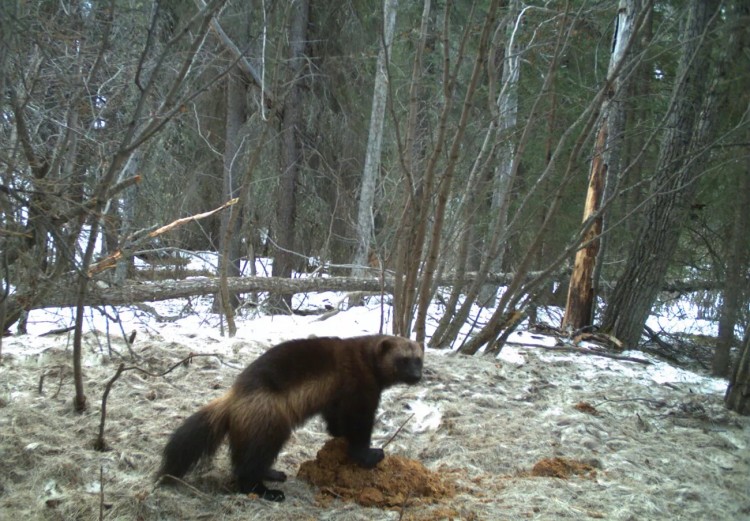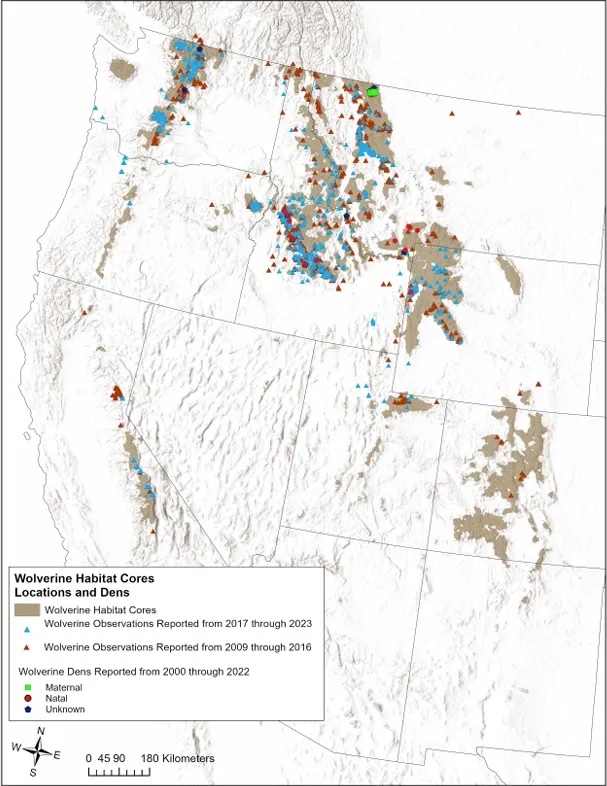Research Revealed: Wolverines & The Endangered Species Act

Are wolverines about to (finally) be listed under the Endangered Species Act?
The closing paragraph of the U.S. Fish and Wildlife Service’s (USFWS) nearly-100 page “species status assessment” of the wolverine seems to suggest so. “Uncertainty over the wolverine’s future condition in the contiguous U.S. is relatively high,” reads the report, published in late September.
A species status assessment (SSA) is a thorough analysis of a species that informs all Endangered Species Act decisions. The SSA process has three successive stages: 1) document the life history of the species and its ecological relationships, 2) describe and hypothesize causes for the current condition of the species, and 3) forecast the future condition of the species.
The recent wolverine SSA paints a grim picture of the animal’s future in the Lower 48, further stating, “the best available information suggests that habitat loss as a result of climate change and other stressors are likely to impact the viability of wolverines in the contiguous U.S. through the remainder of this century.”

A camera trap photo of a wolverine. Courtesy of the National Park Service.
In 2013, the USFWS proposed to designate the North American wolverine as Threatened under the Endangered Species Act (ESA), specifically in the Lower 48 (Alaska’s population is stable). Over the years, this proposal was withdrawn and re-established and withdrawn once again. The 2020 withdrawal led to a lawsuit and a subsequent call for more scientific information. The results of the 2023 SSA suggest that wolverines are likely to be protected under the Endangered Species Act, making their management the responsibility of federal wildlife managers rather than state officials.
Currently, individual states manage the species, but regulations differ from state to state. For example, in Wyoming, wolverines are managed as a “species of greatest conservation concern”; hunting and trapping them is prohibited. A “threatened” or “endangered” status would lead to uniform management of the species regardless of state lines. Given the difficulty in researching this animal, a more streamlined management process certainly wouldn’t hurt.
A notoriously reclusive mammal, wolverines are poorly understood. They are members of the mustelid family–think: weasels, badgers, otters, and martens–and weigh between 17-40 pounds (8-18 kg). They occupy expansive territories in alpine habitat–a notoriously unwelcome place filled mostly with rock, ice, and snow–at very low densities. They need spring snow to successfully reproduce, and large swaths of untouched, high-alpine habitat to hunt and breed. Furthermore, they are sensitive to human disturbance. These factors combine to make wolverines very difficult to study. These factors also mean wolverine populations are at high risk due to climate change, sprawling human populations, and the expansion of winter sports.

A map showing potential wolverine habitat, observations, and den sites. Courtesy of the USFWS.
Wolverines were initially extirpated (locally extinct) from the Lower 48 in the early-1900s due to the fur trade and a human vendetta against predators. By the mid-1900s, thanks to protections and lack of trapping, the species began to recolonize parts of Montana and Washington, and their population slowly spread further south. Very little is known about the size of this population, however.
As stated in the SSA, “Systematic surveys to obtain population estimates have not been attempted in the contiguous U.S. given the difficulty of surveying a species that is highly mobile and occurs across large areas that are difficult to access.” Ten years ago the USFWS estimated a population of 250 to 300 animals in the Lower 48, but the latest assessment does not make an estimate. The SSA goes on to state that “the current wolverine population size in the contiguous U.S. is unknown.”
Much of our knowledge and understanding of current wolverine populations come from reported sightings of the species as well as standardized surveys using camera traps. Our understanding of what’s happening to wolverine habitat is far more robust. As stated in the assessment, “Although historical wolverine populations were likely naturally small and distributed among patches of high-elevation alpine habitats in the contiguous U.S., core wolverine habitats are projected to become smaller and more fragmented in the future as the result of climate change and human disturbance.”
An official listing of the wolverine under the ESA could change how alpine forests are managed throughout the West, affecting logging, mining, and public land recreation. The USFWS has until November 27, 2023 to submit their final determination. We are all waiting with bated breath.













